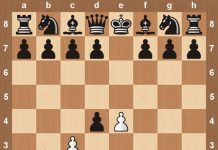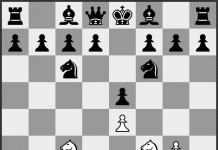Along with developing your pieces toward the center,
getting castled should be on the top of your list! Castling is
the most efficient way to safe-guard your king, get your
Rooks into the game, and coordinate your army – all in
one move! Castling is also one of the final steps toward
completing your development and the Opening stage.
Get Castled and Connect Rooks by Move 10
This advanced principle can serve as a good “insurance
plan”, in case you start following the rules of development
but somehow decide to get lazy along the way. Your “plan
of development” isn’t complete until you get castled and
your Rooks are connected. If you read between the lines,
what does it mean if your “Rooks are connected”?
It means you have:
(1) developed all your minor pieces,
(2) gotten castled, and
(3) (3) finally brought your Queen out to a more active
(though hopefully safe) square. If you have
connected your Rooks, than you have likely completed the
first stage of the game (the Opening) and are now
preparing to play the Middle game
To castle or not to castle… is not a question!
For great chess players – like this game between Edward Lasker and
Sir George Thomas, London 1912 – castling is always “in
the works.” Here the position is white to play and
checkmate in one move. Can you see it?
18.0-0-0!! is checkmate (so was 18.Kd2)! With white’s last
move (17.Rh2 check) forcing the black King to g1, the final
blow is delivered with style. Though a chess player will not
always deliver checkmate when castling, he or she is
almost always headed in the right direction.
Develop with a Purpose: The Ruy Lopez or Spanish Game
Though there are many great games and Opening
variations that can teach you how to develop with a plan
and purpose on every move, one of the most common –
and perhaps most important – for beginning chess-players
is the Ruy Lopez or Spanish Game.
A favorite opening choice of many great World Champions,
including Bobby Fischer and Garry Kasparov, the Ruy
Lopez defines “developing with a plan” on every move: 1.e4
e5; both moves attack the center – 2.Nf3; attacking the e5-
pawn – 2…Nc6; defending the e5-pawn – 3.Bb5; attacking
the c6-Knight who also defends the e5-pawn, continues
3…a6; attacking the b5-bishop – 4.Ba4; defending the
bishop and maintaining pressure on the c6-Knight (if
4.Bxc6 dxc6 5.Nxe5 Qd4! 6.Nf3 Qxe4+ wins back the pawn
with check) – 4…Nf6; attacking white’s e4-pawn – 5.0-0;
safe-guarding the King and indirectly defending the e5-
pawn due to 5…Nxe4 being met by 6.Re1! Attacking every
piece along the e-file…
As a chess-player improves, the most important thing
to establish is that every developing move can and should
create a threat or defend against and opponent’s threat.
Next week we will talk about tactics that are used to win materials and even the game.














